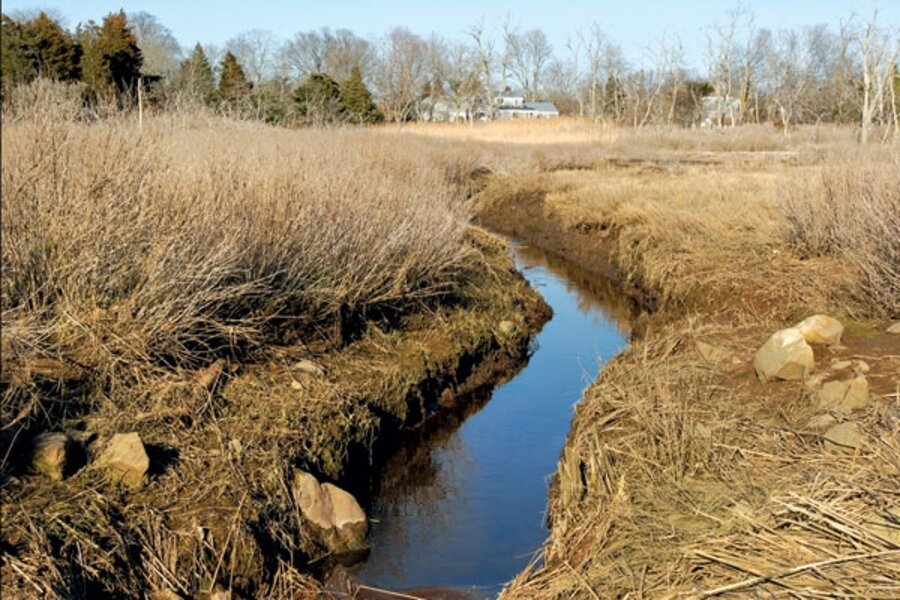Change in atmosphere aids common reed's takeover of wetlands
Loading...
For 150 years, Phragmites – known as the common reed – have overgrown US wetlands, crowding out other plants with dense stands that can grow more than 15 feet high.
At first, scientists thought that the tasseled reed, which spreads by sending out roots that sprout new shoots, had been introduced into the United States, probably from Europe. Then scientists found Phragmites in peat cores dating back 3,000 years – long before European colonization. The Americas did have a native reed, it seemed.
But more recent genetic analysis again bolstered the “invasion” theory – except that it turned out to be more complicated than previously thought.
North America had two Phragmites strains, one native and one introduced. The native one existed in equilibrium with other American plants, but the European one had become an aggressive “superweed.”
Now, a new study reported in the June issue of the journal Plant Signaling & Behavior suggests how human impact on the atmosphere may have inadvertently helped this introduced strain colonize new territory.
The reed secretes a toxin called gallic acid to ward off competitors and to conquer new territory. That’s a common approach in the plant kingdom. Walnut trees, ferns, and sunflowers use such toxins.
But in the reed’s case, exposure to ultraviolet light (UV-B) degrades the toxin, turning it into mesoxalic acid, which is very toxic to nearby plants. Within minutes of exposure, the acid dissolves proteins in the roots of its plant neighbors.
For decades, people have been releasing chemicals into the atmosphere that degrade the ozone layer.
Ozone absorbs incoming UV light, protecting life from the potentially damaging rays.
But with a thinning of the ozone layer, more UV-B reaches Earth’s surface. The increased UV light may make Phragmites’ already potent toxin a little stronger, the authors surmise.
Humans may be inadvertently making the second of Phragmites’ already formidable “one-two” punch to competitors a little stronger.
And that, unwittingly, may have aided its advance across the United States





